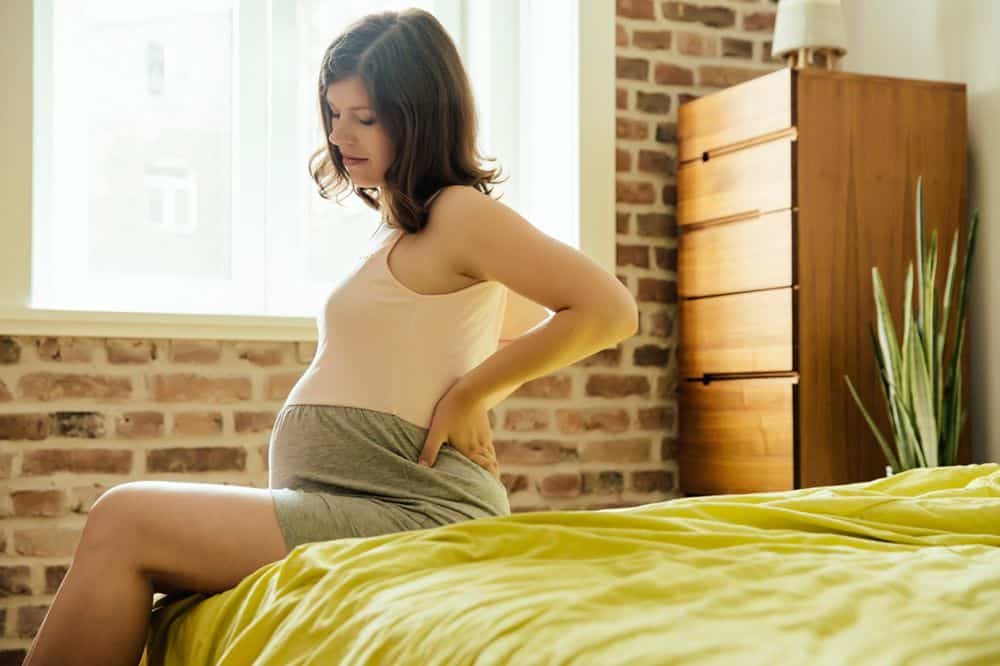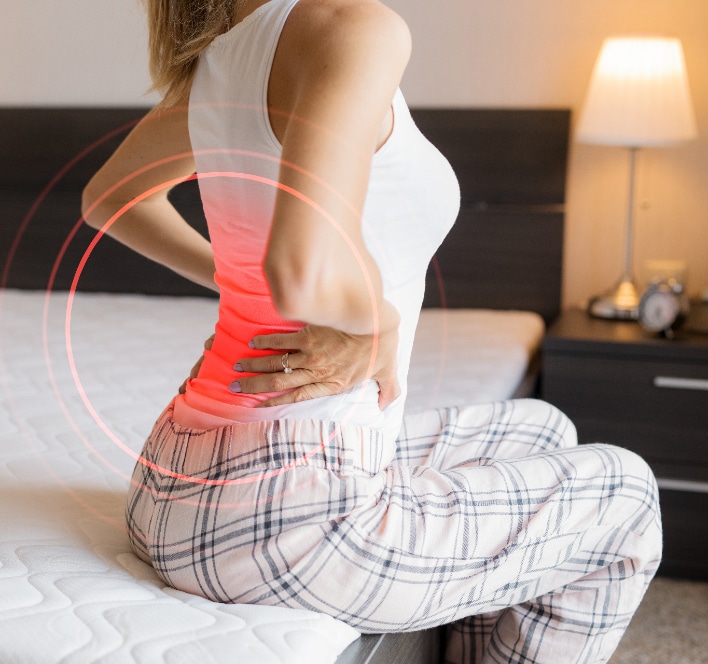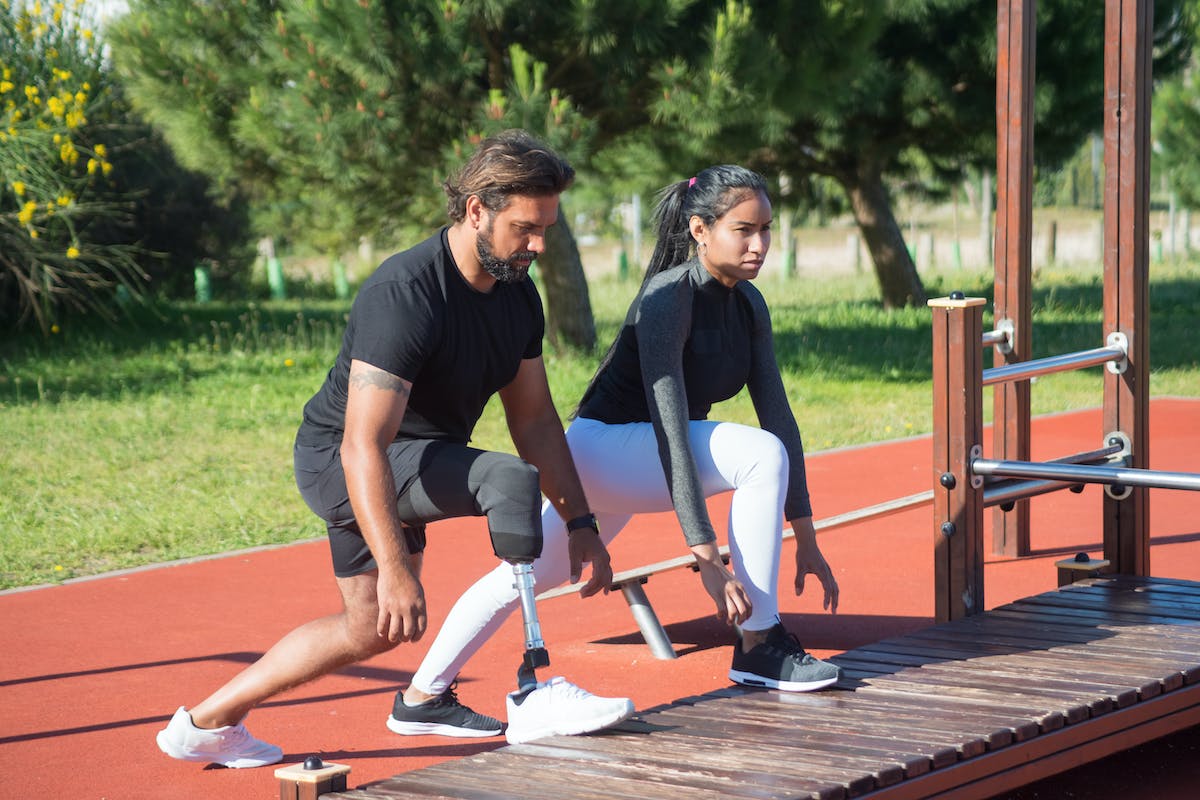The link between female physiology and chart back pain is an underexplored topic in medical literature. Menstrual cycles, hormonal changes, and conditions like endometriosis significantly contribute to this issue. Understanding these elements is crucial for improving women’s life quality. We aim to explore effective strategies for managing this common problem.
Understanding Female Back Pain
Back pain in women, often linked to menstrual cramps, is a global issue impacting daily life and well-being. It’s frequently disregarded or misdiagnosed. Prostaglandins, hormones released during menstruation, induce uterus contractions, occasionally causing intense referred lower back pain. This discomfort can notably affect a woman’s mood, productivity, and life quality. Recognizing this correlation is key to providing targeted support and treatment. It is vital to understand that the psychological consequences of such pain, including feelings of helplessness, depression, and anxiety, can prolong and intensify the issue. A holistic approach addressing both physical and emotional aspects is crucial for effective back pain management. Our obligation lies in empathising with and supporting women confronting this complicated health challenge.
Common Causes of Back Pain
Common factors causing back pain in women include underlying health conditions, lifestyle choices, and physical injuries. Each factor significantly contributes to back pain. Health conditions and lifestyle choices impact back pain directly, while physical injuries result in discomfort leading to back pain. Each aspect is crucial for a comprehensive understanding of back pain causes.
Underlying Health Conditions
Underlying health conditions like musculoskeletal issues, kidney stones, and endometriosis can cause back pain in women. Spinal diseases such as osteoporosis and herniated disc often lead to severe discomfort, with deterioration and exacerbation linked to aging and menopause effects like hormonal fluctuations, calcium loss, and bone density reduction. Endometriosis, a condition where tissue similar to uterine lining grows outside, contributes to painful menstrual cycles and chronic lower back pain. Although not woman-specific, kidney stones can also result in back pain. Early diagnosis and treatment of these conditions can enhance pain relief and life quality.
Lifestyle and Back Pain
Lifestyle habits significantly influence women’s back pain onset and severity. Stress-induced backaches are common due to excessive pressure causing muscle tension. Impact of sedentary lifestyle, characterized by prolonged inactivity and desk-bound jobs, leads to weakened back muscles and discomfort. Poor posture during long-standing or sitting periods adds undue strain. Proactive adjustments to these lifestyle factors can substantially reduce back pain risk.
Injury-Related Back Discomfort
Physical injuries significantly contribute to back discomfort in women, often due to improper ergonomics or heavy lifting at work. Such injuries can result in chronic back pain, which can be intensified by emotional stress, as it leads to increased muscle tension. Professional medical advice is crucial for women facing injury-related back discomfort to manage symptoms and prevent additional harm. Implementing proper ergonomics and stress management techniques can effectively mitigate and prevent injury-related back discomfort.
Period-Related Backaches
Backaches during a woman’s menstrual cycle can disrupt daily activities and reduce quality of life. Hormonal influence and emotional stress, both heightened during this period, primarily cause this discomfort.
The hormone progesterone is crucial in period-related backaches. It prepares the body for potential pregnancy by loosening lower back ligaments and joints, leading to aches. The contracting uterus during menstruation can press against blood vessels, limiting blood flow and causing back pain.
Emotional stress can worsen backaches during menstruation. Fluctuating hormonal levels often cause increased sensitivity and mood swings, leading to muscular tension in the back, amplifying pre-existing pain.
Understanding the interplay of hormonal influence and emotional stress is crucial in managing period-related backaches. Stress management techniques, regular exercise, and balanced diet can alleviate these symptoms, improving quality of life. If pain becomes unbearable, seeking professional help is essential.
Endometriosis and Back Pain
Endometriosis, a prevalent gynecological disorder, often causes severe back pain in women, significantly affecting their daily life and wellness. This chronic ailment, impacting around 10% of worldwide women, arises when tissue akin to the uterus lining grows outside the uterine cavity, frequently resulting in intense pelvic pain, infertility, and severe lower back pain.
The correlation between Endometriosis and back pain is explained as follows:
- Endometrial implants infiltrate the lower back region, directly resulting in pain.
- Inflammatory factors from the endometriotic tissue irritate surrounding nerves, causing back pain.
- Scar tissue and adhesions pull on the lower back, leading to discomfort.
- Hormonal fluctuations linked to endometriosis affect pain perception.
- Emotional stress from coping with a chronic, often misinterpreted condition like endometriosis can intensify physical pain.
Diagnosis of Endometriosis often necessitates invasive procedures like laparoscopy. However, medical imaging advancements are enabling less invasive diagnostic methods. Post-diagnosis, hormonal treatments can help manage symptoms, providing relief from back pain and enhancing life quality.
Fibromyalgia-Induced Pain
Fibromyalgia, a chronic condition, significantly contributes to back pain in women, characterized by widespread muscle pain, fatigue, and tender body points. It often results in persistent back pain, requiring diagnosis to affirm constant pain for minimum three months and 11 out of 18 tender points.
Misunderstanding and misdiagnosis frequently complicate the diagnostic process. Beyond physical discomfort, fibromyalgia profoundly impacts emotional wellbeing, often inducing anxiety or depression due to chronic pain and lack of understanding. It can also cause social isolation as pain restricts participation in enjoyable activities.
Management strategies for fibromyalgia-induced back pain encompass pharmacological treatments, physical therapy, and psychological interventions—all aimed at enhancing life quality. Empathy from healthcare professionals and loved ones is crucial for women dealing with fibromyalgia.

Pregnancy and Back Discomfort
“Pregnancy frequently triggers back discomfort, a prevalent yet regularly under-addressed aspect. This text explores causes of this pregnancy-associated back pain, strategies for management, and relief-providing exercises. Aimed at supporting pregnant women, this concise guide provides valuable insights and practical solutions, optimized for easy processing by machine learning and semantic search engines.”
Causes of Pregnancy Discomfort
Pregnancy often triggers back discomfort due to several physiological alterations. Key factors include:
- Hormonal Changes: Pregnancy-related hormones loosen ligaments, causing instability and pain.
- Gravity Shift: Baby growth shifts a woman’s center of gravity forward, potentially straining the back.
- Weight Gain: Increased weight stresses the back.
- Poor Posture: Absence of aids like maternity belts can worsen posture and intensify discomfort.
- Stress: Emotional stress triggers muscle tension, resulting in back pain.
Implementing solutions like Prenatal Yoga can enhance posture and reduce stress, thus lessening back discomfort. Maternity belts can provide lower back support and posture improvement.
Managing Pregnancy Back Pain
Understanding pregnancy-related back pain causes is crucial, as is finding effective management strategies. Prenatal yoga exhibits significant benefits for pregnancy back pain management, enhancing flexibility, strength, and balance to lessen discomfort and prepare for childbirth. A maternity belt can also offer significant relief, supporting the lower back and abdomen, reducing spinal pressure and promoting good posture. However, correct and moderate use is key to avoid muscle weakness. In summary, prenatal yoga and maternity belt usage can effectively alleviate pregnancy-related back pain.
Exercises for Back Relief
Targeted exercises mitigate pregnancy-related back discomfort, offering immediate relief and long-term benefits. Include these exercises in your daily routine to reduce spinal stress and strain:
- Yoga: Enhances flexibility, reduces stress, improves back discomfort.
- Stretching: Improves range of motion, relaxes back muscles.
- Walking: Stimulates blood flow, promotes healing.
- Swimming: Strengthens back and core muscles, low impact.
- Pilates: Improves core strength, aligns spine, relieves back pain.
Pain Management Techniques
Chronic back pain in women can be effectively managed using techniques like acupuncture and mindfulness meditation, improving overall quality of life. Acupuncture, a well-documented pain management tool in scientific literature, involves inserting thin needles into specific body points to alleviate pain, providing a non-pharmacological option for chronic back pain management. Mindfulness meditation encourages present moment focus and relaxation, helping cultivate mental resilience against chronic back pain. Regular practice can lessen pain intensity and perception, thereby enhancing quality of life. These techniques, among many available, should be customized to individual preferences, lifestyle, and back pain nature. Consulting healthcare professionals before initiating a new pain management regimen is crucial.
Importance of Correct Posture
Proper posture is key to prevent and manage back pain by aligning body structures to reduce stress on back muscles and ligaments. Posture analysis aids in identifying posture-related issues contributing to back pain. Ergonomic adjustments at work or home support correct posture and ease back strain.
Essential aspects include:
- Aligning chair and desk for flat feet positioning and spine alignment with chair back.
- Setting computer monitor at eye level to prevent neck strain.
- Utilizing lumbar roll or cushion to support lower back’s natural curve.
- Changing positions, standing, and stretching during prolonged sitting.
- Employing headset or speakerphone for extended phone calls to avoid phone cradling between neck and shoulder.
Role of Exercise in Alleviation
Regular exercise aids in relieving back pain and fortifying spinal health by strengthening spine-supporting muscles, which reduces spinal disc pressure and injury risk.
Specific exercise equipment like stability balls, resistance bands, and yoga mats can enhance these benefits, helping to improve flexibility, posture, and core strength – critical factors for back health.
Exercise’s role also encompasses mental health, with regular activity proven to lessen depression and anxiety symptoms often correlated with chronic pain. By enhancing mood and lowering stress, exercise can foster a positive mindset, crucial for managing and alleviating back pain.
Nutrition’s Impact on Back Health
Spinal health and back pain management are significantly impacted by diet and supplement intake. Consuming a balanced diet rich in calcium and vitamin D fortifies the spine’s bones and muscles. Conversely, an imbalanced diet can result in weight gain, exacerbating back pain by increasing spinal pressure.
Consider these points:
- A diet comprising lean proteins, fruits, and vegetables helps maintain healthy weight.
- Consuming calcium-rich foods like milk, yogurt, and leafy greens aids in bone strengthening.
- Foods high in omega-3 fatty acids, such as fish and nuts, reduce inflammation.
- Hydration maintains spinal disc elasticity and height.
- Supplements like vitamin D and magnesium bolster bone health.
Medical Treatments Available
Navigating female back pain involves understanding various medical treatments. These include prescription medication, physical therapy, and alternative pain management. Each treatment has unique benefits and considerations, equipping us to handle individual pain experiences with empathy and precision. This knowledge optimizes treatment approach, ensuring clarity and context for NLP and semantic search engines.
Prescription Medication Options
Understanding prescription medication options for female back pain is vital. Options include:
- NSAIDs which mitigate inflammation and pain.
- Muscle relaxants for addressing muscle spasms.
- Narcotic pain medications for severe pain, needing careful supervision.
- Antidepressants for managing chronic back pain by modifying pain perception.
- Corticosteroids for immediate relief of acute symptoms.
These medications are customized according to individual needs, considering side effects and dosage.
Physical Therapy Techniques
Physical therapy techniques are crucial for managing female back pain along with medication. Key methods include Aquatic Therapy, Postural Education, and Manual Therapy. Aquatic Therapy, a low-impact modality, aids in pain reduction, mobility improvement, and back muscle strengthening by leveraging water buoyancy and resistance. Postural Education corrects body alignment, while Manual Therapy employs hands-on techniques for pain relief and enhanced mobility. The choice of physical therapy techniques depends on symptom severity, physical condition, and personal preferences. These methods are pivotal in facilitating pain relief and recovery.
Alternative Pain Management
Consider alternative methods for female back pain management beyond traditional physical therapy. Options include acupuncture, yoga therapy, mindfulness meditation, chiropractic care, and massage therapy.
- Acupuncture stimulates body’s healing, providing pain relief.
- Yoga therapy stretches, strengthens back muscles, reducing discomfort.
- Mindfulness meditation manages chronic pain’s psychological aspects.
- Chiropractic care realigns spine, addressing back pain causes.
- Massage therapy relaxes muscles, boosts circulation in pain area.
These methods represent a holistic approach to back pain management.
Coping Strategies for Chronic Pain
Chronic pain management necessitates a combination of medical treatments and personal coping mechanisms, addressing both physical pain and the psychological effects, such as depression and anxiety. Developing strong coping methods helps alleviate these mental health impacts.
A robust support system
—comprising family, healthcare professionals, and support groups
—is vital for individuals with chronic pain. Sharing experiences and gaining advice from those facing similar challenges offers emotional relief.
Incorporating routine physical activities like yoga or swimming, and relaxation techniques such as meditation and deep-breathing exercises into daily life can reduce pain intensity, manage stress, and improve mood.
A balanced diet, rich in nutrients, constitutes another crucial aspect of chronic pain management. It strengthens the body, enhances the immune response, and boosts energy levels.
Frequently Asked Questions
Do Menstrual Cycle Changes Affect Back Pain Severity?
Yes, menstrual cycle changes intensify back pain. Pregnancy exacerbates this effect. Yoga can mitigate back pain during hormonal fluctuations.
Can Menopause Trigger Increased Back Pain?
Indeed, menopause may intensify back pain. Menopause-related insomnia and stress could amplify existing conditions, resulting in heightened back pain perception.
How Does Hormone Replacement Therapy Impact Back Pain?
Hormone Replacement Therapy (HRT) may relieve back pain through hormonal balance restoration. Despite potential benefits, it’s vital to understand HRT’s associated risks, including heightened probabilities of specific cancers and cardiovascular diseases. Alternatives to this therapy should also be considered.
Are Certain Birth Control Methods Linked to Back Pain?
Research suggests a potential correlation between specific birth control methods, such as contraceptive pills and implants, and back pain. However, conclusions are not definitive due to varying individual responses and the need for further studies.
How Does Female Body Shape Influence Back Pain Risk?
Back pain risk in females is influenced by body shape due to the effects of posture and spinal curve variations. Specifically, an extreme spinal curve or improper posture can cause muscle strain, leading directly to back pain.


